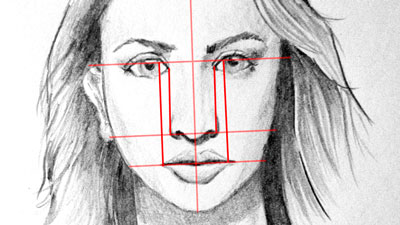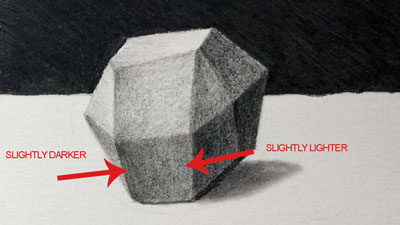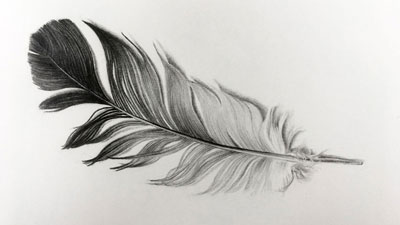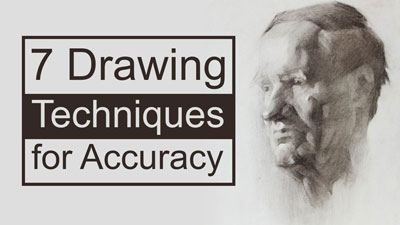Perhaps you’ve started a painting and all has gone well. You’ve found yourself to be “in the zone” and every mark is cooperating. You’re working almost intuitively, and each decision that you’ve made has been “spot on”. The colors are working, the composition is strong, and the materials are almost an extension of your body. Your work is coming together and the excitement is starting to grow. Then it happens.
You’re faced with a turning point in the painting and for some reason, you make an unwise decision.
All of a sudden, your “flow” is gone. It feels as though you have been punched in the stomach and the excitement that you felt has now turned into dismay.
Perhaps you feel foolish. You ask yourself, “How could I have thought that this work would be strong?” You begin to question everything that you’ve done to this point and you begin to feel like a failure.
You don’t know what to do, so you give up and walk away. The feeling stays however and begins to fester.
Does this sound like you?
If you’ve ever experienced this feeling, then you’re definitely not alone. We’ve all experienced it at some point. Some of us more than others, but it’s something that we all struggle with occasionally.
“We all risk failure when we take on anything that’s worth doing.”
We shouldn’t try to avoid it, because it does and will happen. But, we should be prepared to handle it when it does. If we let the emotions that we feel dictate who we are as artists, then we may find ourselves on a slippery slope.
Why We Get So Frustrated
When artistic frustration sets in, our emotions about our work and ourselves can run unchecked. We must understand why we become so frustrated when things don’t go our way so that we can overcome these feelings when it happens.
Any form of creating, whether it be drawing, painting, or anything else, is a deeply emotional experience. We create from a “different place”. Our work becomes an extension of our emotions and we often place our worth on what we create.
This is why we feel pride when we are successful and why we hide works or throw them away when we fail. This is why the frustration is so strong, especially when our identities are often tied to the label of “artist”.
We must learn to separate our emotions from the work that we create. Though not entirely possible, we must learn to look at our work objectively and not emotionally.
You Are Not What You Create
The first step in overcoming these feelings of frustration, no matter how heavy they may feel, is to recognize that you are not what you create.
Your painting or drawing is not who you are. It is not always a reflection of your potential, your skill level, or your effectiveness as an artist. We all have artistic hiccups.
It’s often difficult to separate ourselves from our works, but we must. Our art is a product. Some products are successful and some are not.
Experimentation is a part of every piece that we create, and some experiments unfortunately do not work. We learn from them and grow as a result.
If we allow ourselves to become too emotionally attached to our work, then it becomes almost impossible to evaluate our work objectively. This also limits the risks that we decide take, which are crucial to artistic growth.
With every work that we produce, we are hoping for success, but we must recognize that failure is a possibility.
We all risk failure when we take on anything that’s worth doing.
Take a Break
We shouldn’t avoid frustration, because often it is a sign of growth. We sometimes feel frustration when we are on the cusp of discovering a new strength. But I have found that I often make bad decisions in a work (which leads to frustration) at specific times in the creative process.
I’ve found that I often encounter frustration when I am forcing the work to happen. Instead of allowing myself time to create at my own pace, I am trying to “produce”.
I almost override my creative intuitiveness in order to simply “finish”. Bad decisions are almost always the result.
We must take breaks from time to time to give our creative mind room to breathe. Great art is not forced, it is allowed out.
So, take a break. Step back from the work for a few minutes or maybe even a day. Go for a walk. Do something else. Give your mind a rest.
Come back with a fresh perspective and look at the work objectively – as a product. Evaluate what you are doing well and where you can improve.
Don’t Quit
Sometimes we instinctively want to quit when that overwhelming feeling of frustration sets in. This is the easy route, but definitely the wrong one to take. We create for a reason and we shouldn’t deny the urge.
The creation of art is not easy. There are plenty of “bumps in the road”. But it doesn’t mean that it’s time to leave the path. You must carry on.
If you are at a point where the work is unsalvageable, then learn from the mistake and put the work away. More often then not, the work can be saved and does not need to be discarded. Fix the mistake and continue.
Success Is Victory Over Adversity
Things in life that are worthwhile are inherently full of challenges. Art is no different.
You will face adversities when you create and when you take risks. It is how we react to these adversities that matter.
Many of our successes, whether they be art-related or otherwise, are the result of facing adversity and working through it. Frustration is simply one of these.
If so, join over 36,000 others that receive our newsletter with new drawing and painting lessons. Plus, check out three of our course videos and ebooks for free.
Lesson Discussion
Comments are closed.






Thank you for these beautiful words. I have been in a lack of inspiration for days and i am still on it. I am feeling so frustrated, but every time i go through an art block, then my art gets better. ^^ so, i think its better for me to rest and maybe recognize that my value as an artist is not based on one single piece. :’) Your words made me feel better, thank you again!
HI Serena! Thanks for sharing! We all go through this and it’s a completely normal part of being an artist!
Matt, this is what I needed to read. You truly know how to encourage people so well, and it’s inspiring. This is definitely something we all struggle with and will always face, but learning how to deal with it is the most important thing. I can’t help but feel refreshed after listening to this! Thank you Matt, back to the sketch pad!
Yes, your words are wise and encouraging. I walked away from a piece of work I was experimenting with – ugly. But I am learning and know this is part of growing and finding what works for me and what doesn’t.
Hi Matt, this is what I also needed to read.I was struggling for sometime and didn’t know how to explain that feeling. So I quit and started crochet. Finished 8 blankets up to now but after reading your letter I am thinking of going on with art but a different medium I think oil
Great wisdom in this, Matt. Thanks for sharing it. I find that sometimes I am simply trying too hard and I need to step away from something I’m working on. One piece I had to cover with a sheet because I couldn’t bear to look at it. When I came back to it in a couple of days, I was able to do what needed to be done. It is also easy for me to over-value a work, because of how much time I’ve put into it or the meaning I attach to it. The letting go can be sort of a spiritual process as I learn to focus less on myself…